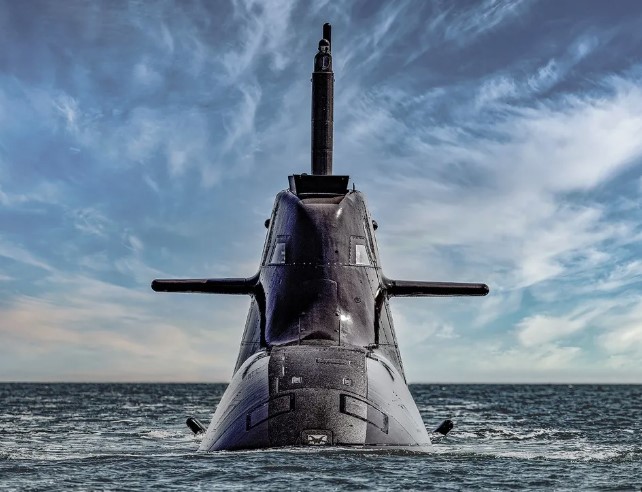Canada is moving full speed ahead with one of its most expensive military projects ever — a massive submarine deal to replace the navy’s aging Victoria-class fleet. This multi-billion-dollar plan aims to modernize the country’s underwater defense capabilities and strengthen its presence at sea.
Canada’s Most Expensive Submarine Deal in Motion
Two global shipbuilding giants are in the race for this submarine deal: Germany’s ThyssenKrupp Marine Systems (TKMS) and South Korea’s Hanwha Ocean. The German company is offering its advanced Type 212CD submarines, while the South Koreans are presenting their state-of-the-art KSS-III model. Both designs are packed with high-end technology and are known for their reliability in naval operations.
Officials have confirmed that both submarines meet the demanding requirements set by the Royal Canadian Navy. This means that other elements — such as delivery speed, industrial benefits, cost, and strategic alignment — will play a major role in deciding who wins the submarine deal.
Canada launches $100 billion submarine gamble—arctic power play or deep-sea disaster in the making?
This competition is not just about building submarines; it’s also about which nation Canada will align with more closely — Europe or Asia. The decision will influence not only Canada’s navy but also its global partnerships and defense strategy for decades.
Speed, Cost, and Industrial Benefits in the Submarine Deal
One key factor in Canada’s submarine deal is how fast the new vessels can be delivered. The current Victoria-class fleet is old and costly to maintain, making timely delivery essential. South Korea holds an advantage since its KSS-III submarines are already in service and production is ongoing.
Hanwha Ocean says if the deal is finalized in 2026, the first KSS-III could arrive by 2032, with all twelve delivered by 2043. This would let Canada retire its aging submarines by 2035 and save about $1 billion in maintenance costs.
Germany’s ThyssenKrupp Marine Systems, working with Norway on the Type 212CD, expects its first delivery to Canada in 2034 and a second in 2036. Both builders have offered to construct submarines in Canada if requested, though that would increase costs and slow production.
The economic impact of the submarine deal is also significant. Germany has hinted at wider industrial cooperation, including potential aircraft and energy purchases. Hanwha, meanwhile, has partnered with Canadian defense firms such as Babcock Canada and CAE, and may invest further in Canada’s energy, aerospace, and minerals sectors.
After years of tension, China and Canada agree to restart dialogue and rebuild trust
Strategic and Operational Factors Behind the Submarine Deal
This submarine deal is not only a matter of technology and cost — it’s also about global strategy. Partnering with Germany and Norway would deepen Canada’s traditional alliances with NATO members in Europe. NATO forces can operate the Type 212CD submarine seamlessly, reinforcing cooperation and security coordination.
However, South Korea’s KSS-III submarines are also compatible with NATO operations. Poland, a NATO member, is already considering the same model for its navy, which demonstrates that the South Korean submarines can fit into NATO frameworks without issue.
Choosing the South Korean option would also send a strong message about Canada’s growing involvement in the Asia-Pacific region. It would strengthen ties with one of Asia’s most advanced defense and technology partners and enhance Canada’s role in a region that has become increasingly important to global security.
Both submarine types are diesel-electric and equipped with air-independent propulsion systems. This technology allows them to stay underwater for long periods without surfacing, making them highly stealthy and efficient. They are capable of performing missions in the Arctic and can operate under ice for limited durations. However, they are not nuclear-powered, meaning they cannot conduct long-term missions beneath thick Arctic ice.
For Canada, which has already ruled out nuclear submarines due to cost and complexity, both the KSS-III and Type 212CD offer the best available combination of performance, affordability, and safety.
Final Observations
The race between Germany’s Type 212CD and South Korea’s KSS-III submarines represents one of the most important defense competitions in Canadian history. The submarine deal involves not only new naval technology but also a complex web of industrial, economic, and geopolitical interests.
Both contenders have presented strong offers. The Germans highlight NATO cooperation and European unity, while the South Koreans emphasize rapid delivery, proven technology, and deep economic ties with Canada.
The final choice will shape the future of Canada’s navy and its strategic partnerships across the world. This historic submarine deal stands as a defining moment for the country’s defense and industry — a battle between two nations offering Canada a powerful new fleet for the decades ahead.

